The Five Senses of Math
posted by Diann Gano
We spend a lot of time outdoors. Playing. That play involves math in such natural ways that it is easy to overlook how often math comes into our lives. Research has found that early math proficiency is a better predictor of future academic success, high school graduation and college attendance than any other childhood skill. (National Governors’ Association, Unlocking Young Children’s Potential: Governors’ Role in Strengthening Early Mathematics Learning
So, here at Under the Ginkgo Tree, we encourage that investigation and provide materials that support children’s development of math concepts. Outdoors, the process for mastering the fundamentals of math is truly enhanced in a holistic and inviting environment. Come see how we create these opportunities using all five senses for all types of learners.
Regardless of the season, we often spend time seeing how tall or small our friends are using resources that are available to us. Sometimes we use tape measures, but often we have other ideas.
Adding magnifying glasses, kaleidoscopes, and binoculars will slow your children down. They will look closer, longer, and think harder. Remember, we are giving them lots of time to investigate and explore and enjoy their childhood. Add these to your play space!
HOW MANY DANDELIONS?
Right! Three! Did you count? No, you subitized! We love to subitize. Subitzing is seeing a small amount of objects and knowing the number without counting. Playing with dice, you roll a six and without counting the 6 pips, you know it is six. We often play this game with fingers. We place both hands behind our back and then bring forward one hand with a few fingers showing. As they get better at this, we make it faster, or change the finger arrangement, or add both hands. We also work with subitizing outdoors with any given object. Kids love this game and I encourage you to play it often. Restaurants, long car rides, or waiting rooms are all great places to subitize! If you have fingers, and a bored child, subitize!
TASTE
Well, this one is almost too easy. If you put six cookies in front of three children and tell them to figure it out…they will. F A I R is a favorite math word that we hear around here. Everyone has to have EQUAL amounts of everything! Every meal we serve has some sort of math discussion available.
I invited the four-year-olds to help set up lunch. When they asked if they could cut the cucumbers, we discovered lots of investigation on size, direction, more, less, and equal.
When it came time to put out the fruits and vegetables, they created sets and counted out tomatoes, cut sandwiches in half. We had a math buzz going on!
Cooking is a great opportunity to bring in math vocabulary and concepts. When cooking with children, we always try to have enough bowls, utensils and, of course eggs, for each child to make their own portion. Think about it, if you watch your friend whip up her award-winning recipe, it’s just not the same as doing it side by side with your own version. This also offers great opportunities for mentoring and scaffolding with their peers on tricks for measuring and cracking eggs. It may not seem like math, but it is. If your body and brain don’t have the energy to deal with the egg mess on any given day, we have been known to cheat with the infants and cracked the egg into the measuring cup. That counts as an egg turn for anyone not old enough to roll her eyes at the thought of it. (Usually your four- year old.)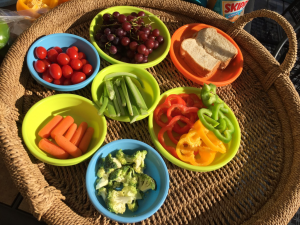
Those little noses often lead us to food. We routinely have
discussions about how many raisins or chocolate chips are in our cookies. We also like to smell in gardens and parks. Did you know that there is a math pattern in nature called Fibonacci? Some refer to Fibonacci as nature’s number system. From the pattern of florets on a flower to the bracts of a pine cone or the leaf arrangements in plants, the same number pattern appears over and over. The basic pattern is 1,1, 2, 3, 5, 8, 13, 21, 34… The next number is found by adding up the two numbers before it. It forms a spiral. This is a bit complex for most of the young learners in our program, but we talk about it and the spirals that we see in pineapples, and pinecones and flowers.
We often count the number of petals on our flowers. Last summer we planted perennials to our play space and included a number of flowers that include this Fibonacci pattern. Cala lilies have one pedal; euphorbia have two; triilium and some iris have 3 petals; buttercups and columbine have 5; bloodroot have 8, black-eyed Susan’s have 13; shasta daisies have 21 whereas other daisies can be found with 34, 55 or even 89 petals. Isn’t that crazy fun?
We live a block from a college campus and the bell tower. So every hour on the hour we have some counting sound opportunity in our own backyard. Music is an easy way to add math to your outdoor play space.
We have bells placed throughout our play area. We often have obstacle courses that include ringing a bell or drumming on a drum. Music is a big part of our lives. Singing songs, counting rhymes and fingerplays combine music and math. Really is there any better place for those loud drums, bells, tambourines and maracas? What were we thinking? These are outdoor toys!
When you give children real materials to touch and smell and feel, the learning is deeper and more authentic. There is a major difference between touching real apples and moving them from basket to basket, than counting apples on a worksheet. Looking at stripes and circles on a page is not the same as touching and understanding that each rock has stripes or circle textures or has six shades of green. It makes sense to them. They control it. They aren’t rushed to move on to the next box on the worksheet. Give them real materials.
We talk about blocks and rocks often in our program. Those two things create an unbelievable amount of building. Building is math. We spend hours and hours building things that we may not ever even play in or with. We have spent days making forts. Sometimes, we don’t ever actually play IN them. We just build them. We build zoos, and fairy homes and squirrel traps. It is the building that is the fun, the creativity, and the play. Give your children time to touch, and think and process, and arrange and rearrange. It’s all good.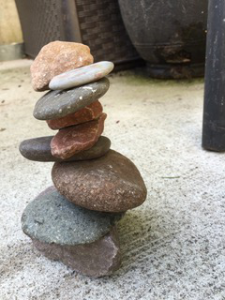
We also play games where one child plays a rhythm and the other needs to repeat it. There’s very often pattern play going on with this. For many children that rhythm and counting go hand in hand. When we follow singing commands to go in or out, or up and down, around and through, those build spatial awareness and reasoning skills that are important skills for geometry. Everyone is happy when we have music in our lives. Make your own or fire up Pandora!
Have fun this week noticing how often math is in your child’s life. It will make you smile and give you peace to know that you are doing just fine as a parent and an educator. Keep creating math environments and playing with your kids. It’s all quite simple. Put the worksheets away. It will come when their brain development is ready and it is relevant to them. Until then, just watch, listen and smell the learning coming their way!
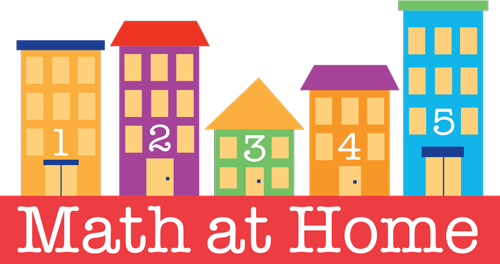
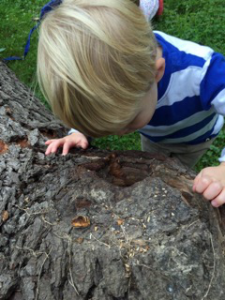
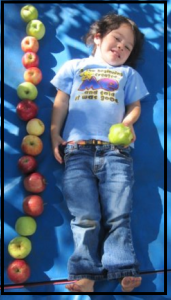
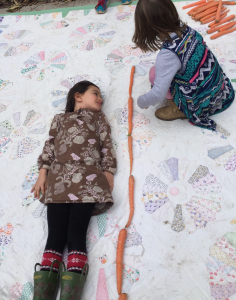
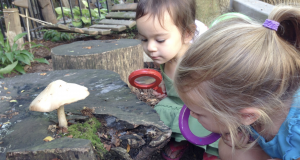
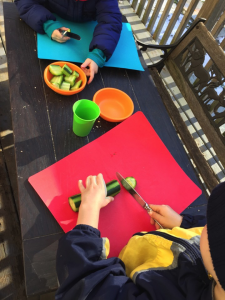
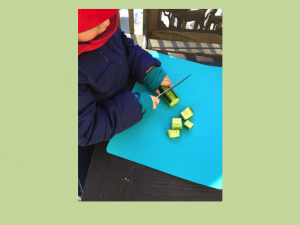
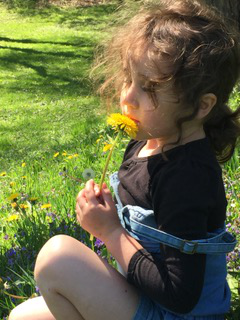
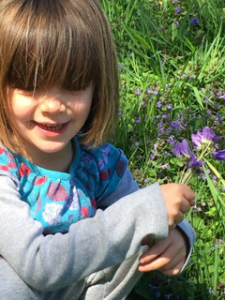
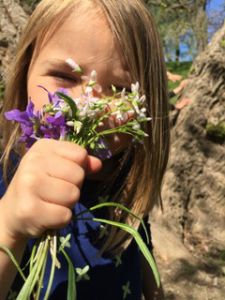
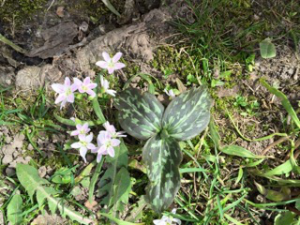
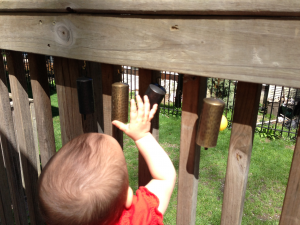
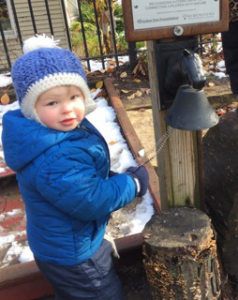
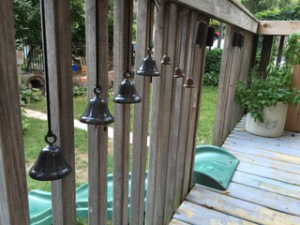
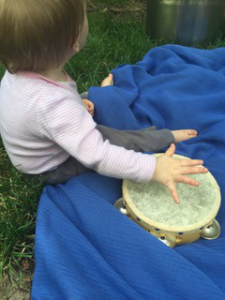
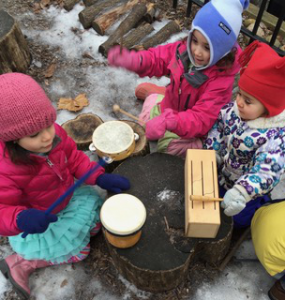
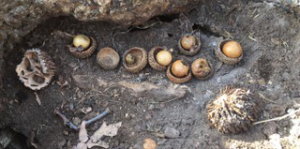
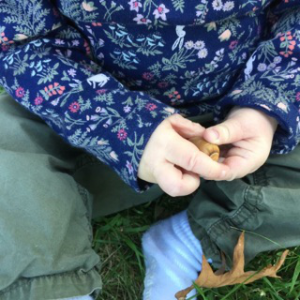

When I read articles like this it just validates that I am doing things right. We do so many of these daily activities and while we know the intent of our activities, parents often don\’t. They look for that concrete proof and when it\’s not there they wonder. They wonder what their child is learning. They wonder what we do all day. They wonder if it\’s enough to have their child ready for Kindergarten. If a parent would stop and wonder and explore like their children, they would see us in a whole new light.
I really like this article because it tells how its good to pay attention to your child in school and out of school. it also shows what your child does and learn in school.
What a wonderful article on Math in nature. No doubt I will be using this as a part of my summer activity line up in my own back yard and neighborhood walks!
I enjoy how this includes so many other objectives on our learning scale.
I think that cooking is an excellent tool to use in the classroom! Everyone can participate regardless of their ability. S many opportunities at the bottom of a mixing bowl!
I love using the 5 senses
Great ideas on how to incorporate Math with nature.
beautiful ideas to spend outside with children and learning.
Some great ideas! So simple to incorporate but we just need to be reminded to use it I think.
I really enjoyed reading how math can be enjoyed outside through the five senses.
I enjoyed how math can be used outside in nature and it can be enjoyable and educational as well by using their 5 senses.